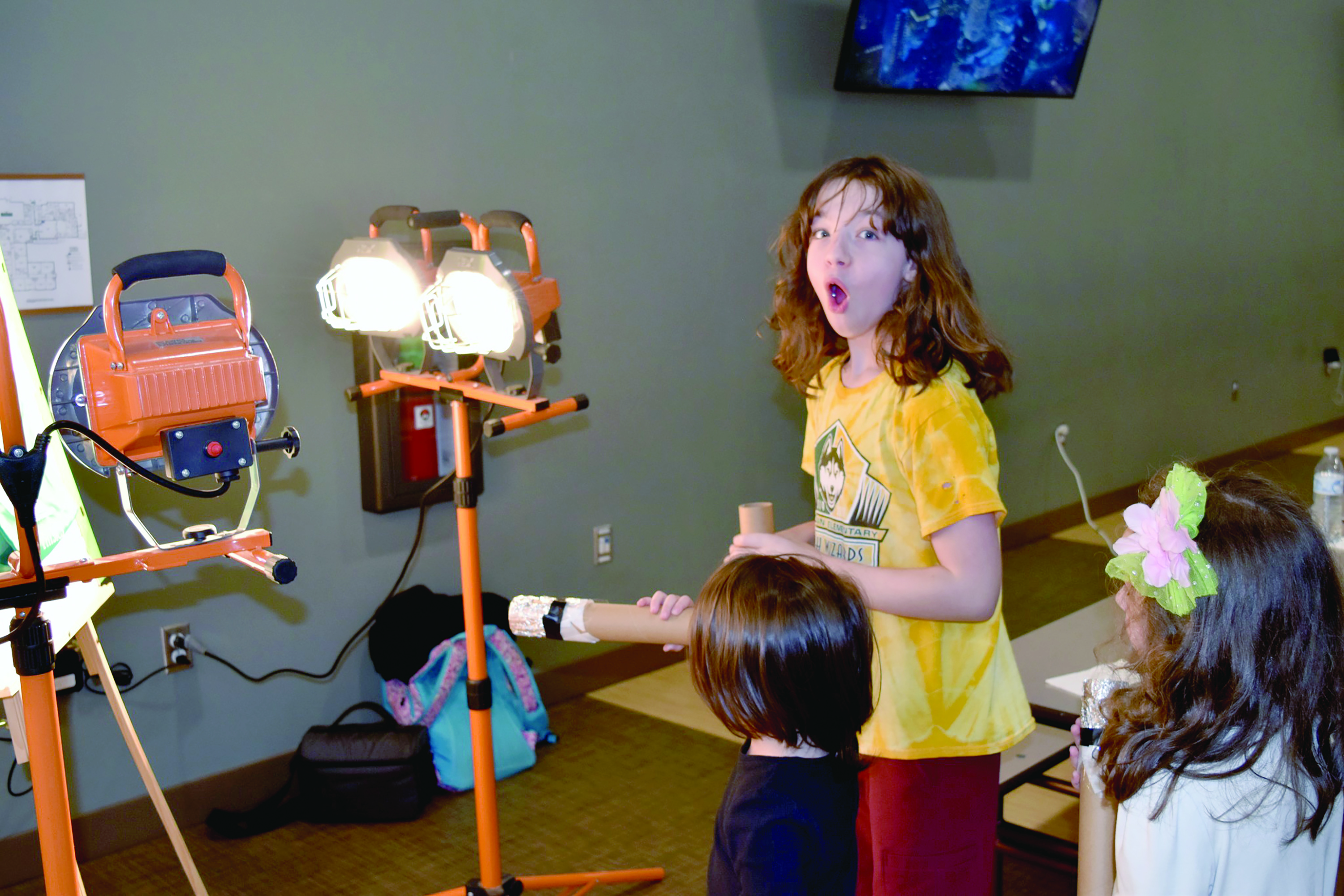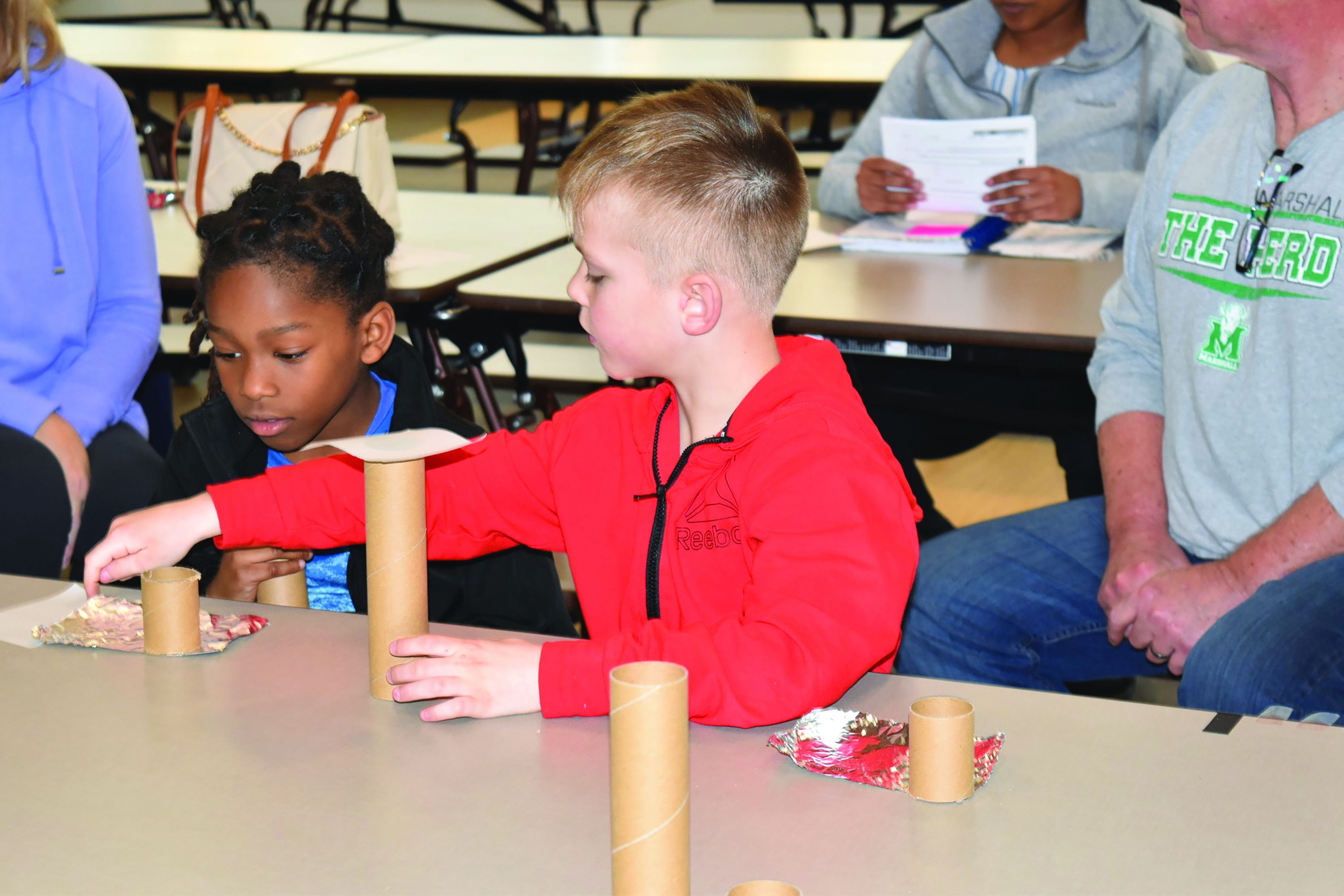Teaching Students to Make Cameras From Scratch
Winter
2024
SPS Chapters on Hands-on Projects
Teaching Students to Make Cameras From Scratch
AJ Messinger, SPS Chapter President, and Sean P. McBride, SPS Chapter Advisor, Marshall University
How do you make a pinhole camera out of cardboard tubes, aluminum foil, and tracing paper? That’s what students from Davis Creek Elementary School and Highlawn Elementary School learned from members of our SPS chapter at Marshall University (MU), located in Huntington, West Virginia. We hosted two STEAM-centered (science, technology, engineering, art, and math) activities, one for each school, during which young participants built their very own pinhole cameras!
We helped students create their cameras from two cardboard tubes (of different lengths) and other household items. First, students covered one end of the longer cardboard tube with tracing paper. Then they attached the shorter cardboard tube to the longer one so that the tracing paper was in the middle. Finally, students covered the open end of the smaller cardboard tube with aluminum foil. At this point, we poked a small hole in the center of the aluminum foil to let in light. When students pointed this hole at an object and looked though the open end of the tube, they could see an inverted image of the object on the tracing paper!
When you place a screen in front of an object, you don’t usually see an image of that object on the screen. That’s because light reflecting off of the object interferes with other light in the room. However, a pinhole filters out most of the noise, allowing light from the desired object to travel through the tube without much interference. The images generated by pinhole cameras are sharp but very dim. The smaller the hole, the sharper the image.
After students finished their cameras, we encouraged them to find the most unique images they could. Excitedly, students viewed their school and its surroundings through their instruments. Playing with their simple devices brought them a lot of joy. The students loved doing their very own science experiments with everyday supplies. They were also excited to take their pinhole cameras home and show them off to family and friends.
Overall, both events were a success. SPS members AJ Messinger and Aidan Payton did an amazing job leading the Davis Creek and Highlawn workshops, respectively. Messinger is an alum of Davis Creek, making the event extra special. The schools told us how much their students loved the MU SPS workshop, and as a chapter, we enjoyed sharing our excitement about science with the younger generation. We hope to hold this workshop again, re-creating the excitement with new students and igniting a spark in them to learn more about the exciting field of physics and STEAM.
Supplies for the pinhole cameras were sponsored by the MU SPS chapter through the endowed Society of Physics Students Fund.
Expand Your Outreach with an SPS SOCK
Science Outreach Catalyst Kits (SOCKs) are free science outreach kits designed for SPS chapters. New SOCKs are created each summer by SPS interns. Request a SOCK for your chapter at spsnational.org/programs/outreach/science-outreach-catalyst-kits.



